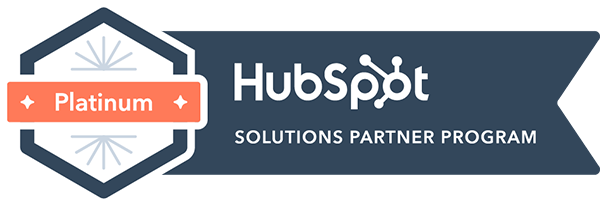
The transition from a marketing lead to a sales prospect is not as well defined as you might think. Marketing and sales are often thought of as having separate roles, but the truth is, those teams should be working as partners in customer acquisition and satisfaction.
The lead to prospect pipeline requires a pretty seamless integration between marketing and sales. How can your insurance agency master that handoff? Here’s what you need to know:
Marketing vs. Sales Qualified Leads
Leads, prospects, potential customers…these labels are often used interchangeably, and it can be difficult to know how they’re different. But those differences do matter, and it changes the way your business communicates with each of them. For the purposes of this article, here are some of the terms we’ll be using:
Lead: A lead is someone who has expressed interest in your product or service in some way, and has likely exchanged contact information for something you’ve offered (like a lead magnet.)
Marketing Qualified Lead (MQL): A marketing-qualified lead is a potential customer who the marketing team deems qualified to be passed along to the sales team. Another word for a lead at this stage would be a prospect.
Sales Qualified Lead (SQL): A sales-qualified lead is a potential customer who is interested in buying and becoming a customer.
The Buyer’s Journey
At what point does a marketing lead become a sales lead, and what does that handoff look like?
Here’s an overview of the insurance buyer’s journey, and what your sales and marketing can expect to do at each step:
1. Awareness: At this stage, a potential lead becomes aware of your business. This might happen through marketing campaigns or advertisements that your marketing team has created, or through search engines or word of mouth.
2. Consideration: Next, a potential customer will start to research your products and consider buying from you. They might shop around and compare your policies with other carriers. At this point, you want to make sure your prospect has multiple ways to contact you, ask questions or get more information.
3. Purchase: Your qualified lead is ready to become a paying customer, but the journey doesn’t end there. You need to make sure your customer understands what’s available and what will best suit their needs before buying. You want to simplify the buying process as much as possible, and be available to help your customer.
4. Retention: Gaining a new customer and keeping an existing customer requires different methods of engagement. At the retention stage, you need to continue to understand your customers’ needs, and offer new or different products as their needs change. You should also continue to communicate with your customers, and pay attention to potential areas of improvement. A robust CRM system helps tremendously, because it allows you to add, track and update your customers’ information, and receive updates when it might be time for a different product.
5. Customer advocacy: The last step in the insurance buyers’ journey is customer advocacy, also known as your happy (or unhappy) customers telling other people about your product. How does your company handle both criticism and praise online? Is there anything you can do to maximize or reward brand loyalty? And if you do receive negative feedback, what steps do you take to assess and resolve the situation?
The Marketing to Sales Handoff
While the marketing and sales team have distinct roles in the company, they each have important jobs to do at every step of the buyer’s journey. Not only that, but they each have ways they can collaborate along the way.
The marketing team creates the campaigns and materials used in the awareness stage, but input from the sales team can be very valuable. The sales team knows what they need to make the sale, and the marketing team can incorporate elements of that strategy into their marketing plan.
The sales team communicates with the potential customer in the considerations and purchase stages, but they build on the messaging that drew the customer in during the awareness stage.
Ultimately, the marketing and sales teams work best when integrated. But during the consideration stage, there is a point where the prospect decides they want to look into buying a policy, and that is where the handoff happens.
How to Create a Seamless Transition
The transition from lead to customer should feel seamless for the customer, but below the surface, there are many moving parts happening at once.
Here are some of the steps that happen along the way:
A potential customer exchanges their contact information for more information about your business, becoming a lead.
From there, they research your policy options, read reviews and decide if they might want to work with you. The lead reaches out for more information, becoming a prospect.
Your prospect is now in touch with your sales team, receiving information and deciding which policy will work best for them.
Your prospect becomes a customer, and over time, may continue to need assistance or new products as they experience life changes.
Through all those transitional phases, your marketing team needs to make sure the lead is directed to the sales team when they’re ready to become a customer. It can be a gradual or more abrupt process, which is why it’s so important to have a CRM system that allows your teams to work together and see where each lead is within the system.
The Importance of Brand
A streamlined, professional sales pipeline is going to suffer is the messaging isn’t clear and cohesive. That’s why your brand matters. Brand drives everything, and if everyone isn’t on board, you’re going to be reaching the wrong customers, or delivering a muddled message.
Your brand is similar to your mission statement: it defines who you are as a business, and what you stand for. Everything your business does needs to echo that message. And whether you’re drawing in new customers or working with existing ones, your brand needs to be evident. When it is, it makes the marketing to sales handoff even smoother, because your teams are working with a unified goal and message.
An aligned marketing and sales team paves the way for a successful lead-to-customer pipeline, and exceptional customer experience from the very beginning.




